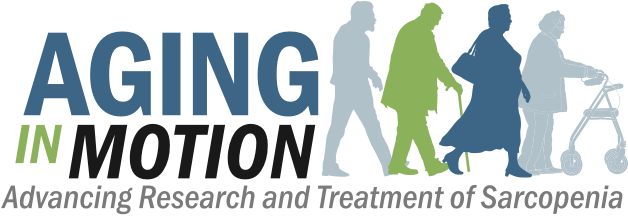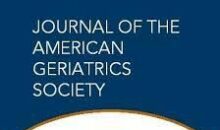Trail Blazer: Dr. Lynda Bonewald on new muscle-bone research models and breakthroughs
New models and breakthroughs in bone and muscle research are redefining the way scientists study these two organs, and Dr. Lynda Bonewald, Interim Vice Chancellor for Translational & Clinical Research at University of Missouri-Kansas City, is leading the way towards promising pathways to help manage debilitating and costly musculoskeletal conditions like sarcopenia that leave millions of older Americans vulnerable to lost independence.
As co-organizer of the recent ASBMR Topical Meeting: Bone and Skeletal Muscle Interactions, Dr. Bonewald’s early work served as the basis for this forum in which musculoskeletal researchers shared breakthroughs in the area of muscle-bone “crosstalk,” a phenomenon that reveals a strong connection that goes beyond mechanical muscle-bone connections. This relationship is proving to be so strong that she and her colleagues are laying the groundwork to create a new musculoskeletal research component – a novel research field that views bone and muscle not as separate “camps” but as part of a highly inter-related system of molecular signals and interactions.
Dr. Bonewald’s early work focused on the osteocyte, a type of cell in the bone structure that has long been known to play a mechanical role in bone development. “At that time,” she explained, “it was assumed that this cell didn’t do anything [beyond] sense loading or unloading to the bone and send signals to the surface of bone to either make more bone or restore bone… [T]he fact is that yes, the cell is a mechanosensory cell, but there’s much more than that.”
In fact, Dr. Bonewald and her colleagues discovered that the osteocyte and muscle cells both secrete signals that trigger growth and deterioration in each other. “We have one paper published where we show that muscle [has] a factor that maintains osteocyte viability, and it’s specific to muscle and not the other cell types that we tested,” Dr. Bonewald explained. “We think we’re close to identifying what that factor is.” Likewise, the products of the osteocyte had “dramatic effects on… muscle function” and quality. Perhaps most exciting – and most promising – are recent experiments in which suppressed signals secreted by osteocytes in mouse models led to gains in muscle mass as the mice reached advanced ages. While these results must be studied further before being applied to human studies, already this unprecedented work is bringing researchers toward a greater understanding of age-related muscle loss and ways to possibly prevent it in older patients and underscores the importance of continued investment in this area of research.
Musculoskeletal conditions already affect the aging population at staggeringly high rates: approximately 20% of the older U.S. population is functionally disabled due to bone and/or muscle weakness; at a cost of $950 billion annually, musculoskeletal diseases are the most prevalent health condition in the US; hip fractures account for 300,000 hospitalizations per year, and 25% of those patients die within the year.* These numbers will only continue to climb.
“With our aging population becoming close to 20% of the total population within the next 10 to 20 years, obviously there’s going to be a focus on the musculoskeletal system, “ Dr. Bonewald said. “[W]e need to be thinking of the quality of life of our aging population; these individuals are extremely experienced and they can still contribute to society, but not if their health occupies not only their time and money, but the attention and money of society.”
Even as she and her colleagues face the challenges of forging a new pathway in research during times of reduced funding levels, Dr. Bonewald says, “the new discoveries… [are] what keep me going.” Spoken like a true pioneer.
Read the full interview here
Note: Dr. Bonewald and ASBMR are planning a special ASBMR Symposium: Cutting Edge Discoveries in Muscle Biology, Disease, and Therapeutics, Thursday, October 3, 2013, Baltimore Convention Center in Baltimore, MD, USA one day prior to the ASBMR 2013 Annual Meeting, October 4-7, 2013 (which will also feature sessions on muscle bone crosstalk). Stay tuned to the ASBMR website for more information.
Dr. Bonewald is the Vice Chancellor for Translational and Clinical Research, Interim, Curators’ Professor, Lee M. and William Lefkowitz Professor, Director, UMKC‐CEMT, and Director, Bone Biology Research Program in the UMKC School of Dentistry, Department of Oral Biology. She performs research in the area of bone and directs the Mineralized Tissue Biology. She is a member of the American Society for Bone and Mineral Research (and serving as the 2013 President), the Association of Biomolecular Resource Facilities, and the International Bone and Mineral Society. Dr. Bonewald is also a member of the American Association for Dental Research, and the International Association for Dental Research.
*Statistic sources: (Janssen I, Shepard DS, Katzmarzyk PT, Roubenoff R. The Healthcare Costs of Sarcopenia in the United States. Journal of the American Geriatric Society 52:80–85, 2004.); (Burden of Musculoskeletal Diseases in the United States: Prevalence, Societal and Economic Cost. Rosemont, IL, American Academy of Orthopaedic Surgeons, February 2008. http://www.boneandjointburden.org/)

